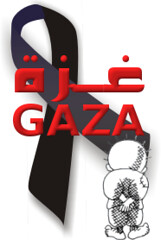
Crisis in Gaza
Gaza is now in the grip of a severe humanitarian crisis as the result of resumed fighting between Palestinian militias and Israel in late December. Hospitals are on the verge of collapse as they struggle to cope with waves of casualties and doctors face critical shortages of essential medical supplies.
The military offensive follows an 18-month blockade on Gaza and its 1.5 million residents. Approximately 80 percent of Gaza families were receiving some form of humanitarian assistance prior to the outbreak of the conflict, which has now been disrupted.
Because of fuel shortages and dangerous conditions, about 70 percent of Gaza’s population has access to water for only a few hours once a week. Lack of electricity has forced five of Gaza’s wastewater facilities to shut down, jeopardizing remaining water supplies.
A trickle of aid has been getting through, but not enough to support countless people who are running out of food and water. Unsafe conditions have also meant that many families are too frightened to leave their homes to get aid.
What Oxfam is Doing
Oxfam’s local partner organizations continue to provide emergency health care in Gaza despite dangerous conditions. A paramedic working for an Oxfam-funded organization was killed on January 4, when a shell struck a civilian ambulance owned by the Union of Health Work Committees (UHWC).
Those members of Oxfam’s staff and partner organizations that are not working in humanitarian health care are taking shelter where they can. For example, one staff person, whose apartment building was damaged by shelling, is staying with his family in the Oxfam office. While safety concerns have prevented Oxfam from conducting detailed assessments, it is clear that Oxfam and its partners have an enormous amount of work ahead.
Fonte: Oxfam international












